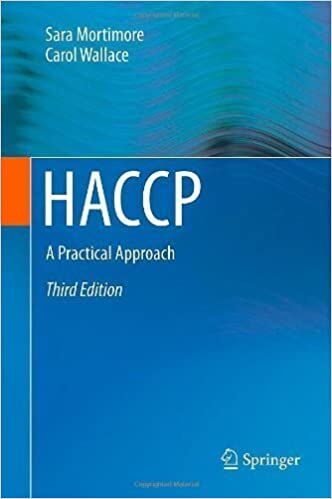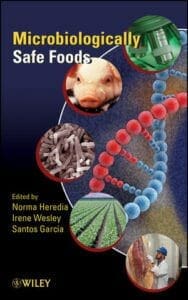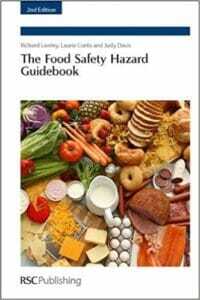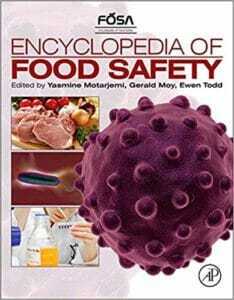Foreword
Chapter 1: An Introduction to HACCP and Its Role in Food Safety Control
1.1 HACCP: The Basic Questions Answered
1.1.1 What Is HACCP?
1.1.2 What Are the Principles of HACCP?
1.1.3 Where Did HACCP Come from?
1.1.4 So, Why Should You Use HACCP?
1.1.5 Why Can´t We Rely on Inspection and Testing?
1.1.6 What Are the Benefits?
1.1.7 Is HACCP All I Need to Do for Food Safety?
1.1.8 Can HACCP Be Used to Reduce Food Safety Risk in the Absence of Adequate PRPs?
1.1.9 Is HACCP Applicable to Everyone?
1.1.10 Why Should I Revisit My HACCP Program? I´ve Done This Already
1.2 External Position and Drivers for HACCP Use
1.2.1 Customers and Consumers
1.2.2 International Government Regulation
1.2.3 Government Inspectors and Enforcers
1.2.4 International Standardization
1.2.5 Media Issues and Brand Protection
1.3 Problems with Effective Implementation of HACCP: Why HACCP Fails
1.3.1 Examples of Food Safety Incidents
1.3.2 Failure to Understand HACCP: Common Misconceptions
1.4 Key Points Summary
Chapter 2: Preparation and Planning to Achieve Effective Food Safety Management
2.1 The Key Stages of HACCP
2.2 Preparing the Way: Personnel and Training
2.2.1 Personnel Resources
2.2.2 What Are the Training Requirements?
2.3 What Is Our Current Status? Baseline Audit and Gap Analysis
2.3.1 Performing the Gap Analysis: Questions to Consider for PRP Assessment
2.4 Use of the Hazard Analysis and Risk Evaluation Process as an Enabler to GMP Improvement
2.5 How Do We Get There? Project Planning
2.5.1 What Structure Should the HACCP System Take?
2.5.2 Using Project Planning Techniques
2.5.3 Drawing up the Project Plan
2.6 Continuous Improvement
2.7 Key Point Summary
Chapter 3: Hazards, Their Significance, and Control
3.1 Hazards and Their Significance
3.1.1 Hazards and the Consumer
3.1.2 Assessing Hazard Significance
3.2 Understanding Control Measures for Practical Hazard Control
3.3 Biological Hazards
3.3.1 Biological Hazards and the Consumer
3.3.2 Major Pathogenic Bacteria of Relevance to Food
3.3.3 Viruses
3.3.4 Parasites and Protozoa
3.3.5 Prions
3.3.6 Emerging Pathogens
3.3.7 Animal Pathogens of Relevance to the Global Food Supply Chain
3.4 Control of Biological Hazards
3.4.1 Intrinsic Factors
3.4.2 Process Technologies
3.4.3 Summary of Control Options for Biological Hazards (Table3.7)
3.5 Chemical Hazards
3.5.1 Mycotoxins
3.5.2 Marine Toxins (Fish and Shellfish Poisoning)
3.5.3 Cleaning Chemicals
3.5.4 Pesticides
3.5.5 Allergens and Food Intolerances
3.5.6 Toxic Metals (also known as heavy metals)
3.5.7 Nitrites, Nitrates, and N-nitroso Compounds
3.5.8 Polychlorinated Biphenyls
3.5.9 Dioxins and Furans
3.5.10 Polycyclic Aromatic Hydrocarbons
3.5.11 Plasticizers and Packaging Migration
3.5.12 Veterinary Residues
3.5.13 Melamine and Cyanuric Acid
3.5.14 Chemical Additives
3.6 Control of Chemical Hazards
3.6.1 Summary of Control Options for Chemical Hazards (Table3.9)
3.7 Physical Hazards
3.7.1 Glass
3.7.2 Metal
3.7.3 Stones
3.7.4 Wood
3.7.5 Plastic
3.7.6 Pests
3.7.7 Intrinsic Material
3.8 Control of Physical Hazards
3.8.1 Summary of Control Options for Physical Hazards (Table3.10)
3.9 Radiological Hazards
3.10 Conclusions
3.11 Key Points Summary
Chapter 4: Prerequisites for Food Safety: PRPs and Operational PRPs
4.1 Definitions and Standards
4.1.1 Definitions
4.1.2 Standards and Guidelines
4.2 Environment, Programs, and People
4.2.1 Environmental Focus: Design for Good Hygiene
4.2.2 Programs
4.2.3 People
4.3 Validation and Verification of PRPs
4.4 Key Points Summary
Chapter 5: Designing Food Safety
5.1 Product Safety Design
5.1.1 Designing Your Recipe Formulation
5.1.2 Designing Safe Processes
5.1.3 Safe Raw Materials for Safe Product Design
5.1.4 Establishing a Safe and Achievable Shelf-Life
What Factors Could Cause the Product to Become Unsafe?
How Do You Know When Pathogens Reach Unsafe Levels?
5.2 Prerequisite Program Design
5.3 Equipment and Factory Design for Product Safety
5.4 Product Safety Assessment
5.4.1 Development Specification
5.4.2 Product Concept Safety Considerations
5.5 Key Points Summary
Chapter 6: How to Do a HACCP Study
6.1 What Is the HACCP Plan?
6.1.1 The Process Flow Diagram
6.1.2 The HACCP Control Chart
6.2 Define Your Terms of Reference
6.3 Describe the Products and Their Intended Use
6.4 Constructing a Process Flow Diagram
6.4.1 Types of Data
6.4.2 Style
6.4.3 Verify as Correct During Manufacture
6.5 Carrying out the Hazard Analysis
6.5.1 The Structured Approach to Hazard Analysis
6.5.2 Questions to Be Considered
6.5.3 Ensuring Sufficient Detail
6.5.4 Severity and Hazard Significance
6.5.5 Reference Materials: Where to Find Them and How to Use Them
6.5.6 Identifying Control Measures
6.6 Making Food Safety Decisions
6.6.1 Where Are the Critical Control Points?
6.6.2 Use of CCP Decision Trees for Raw Materials
6.6.3 Use of CCP Decision Trees for Process Steps
6.6.4 Operational PRPs
6.7 Building Up the HACCP Control Chart
6.7.1 What Are the Critical Limits?
6.7.2 Validating Your Critical Limits
6.7.3 Confirming Process Capability
6.7.4 Finding the Right Monitoring Procedure
6.7.5 Corrective Action Requirements
6.8 Validation of the HACCP Plan
6.9 Key Point Summary
Chapter 7: Implementation, Verification, and Maintenance for Ongoing Risk Management
7.1 Implementation of the HACCP plan
7.1.1 Preliminary Steps: Challenging Your Controls and Corrective Action Systems
7.1.2 Implementation Requirements and Action Planning
7.2 Set Up CCP Management Systems: Monitoring, Corrective Action and Record Keeping Requirements
7.2.1 Developing Monitoring Records
7.2.2 Monitoring Methods: Use of Statistical Techniques
7.2.3 Corrective Action: Requirements for Reporting and Acting on Deviations
7.2.4 Feedback on Results
7.3 Additional Facilities and Equipment for HACCP Implementation
7.3.1 Facilities
7.3.2 Equipment
7.3.3 CCP Identification on Facilities and Equipment
7.3.4 Modifications: Are They Complete?
7.4 Education and Training
7.4.1 Foundation Training
7.4.2 CCP Monitors
7.5 Confirm Implementation Actions Are Complete: Verification of Implementation
7.6 Verification as a Way of Life
7.6.1 Records Review: Analysis of Data
Why Analyze Data?
What Data Should Be Available?
How Should the Data Be Analyzed?
7.6.2 Calibration
7.6.3 Verification Through Observation and Scheduled Audit
7.7 HACCP system Maintenance
7.7.1 Safety Review for Product and Process Changes
7.7.2 Information Searching: Keeping Up to Date with Emerging Issues/Hazards
7.7.3 Formal Periodic System Review
7.7.4 Documentation Update: Amending Your HACCP plan
7.7.5 Ongoing Training Requirements
7.7.6 Incident Management
7.7.7 Ongoing Documentation and Record Keeping
7.8 Key Points Summary
Chapter 8: Considerations for HACCP Application in Different Supply Chain Sectors
8.1 Introduction
8.2 HACCP Application in Packaging Production
8.3 HACCP Application in Animal Feed
8.3.1 Introduction
8.3.2 What Are the Hazards?
8.3.3 Typical Control Measures
8.3.4 Approach(es) Taken
8.3.5 Difficulties and Issues
8.4 HACCP Application in Primary Production
8.5 HACCP Application at Slaughter/Harvest
8.6 HACCP in Manufacturing
8.7 HACCP Application in Retail: The Supermarket
8.7.1 Introduction: HACCP in the Supermarket
8.7.2 Approach Taken
8.7.3 What Are the Hazards?
8.7.4 Benefits
8.7.5 Challenges and Issues
8.8 HACCP Application in Catering
8.8.1 Introduction
8.8.2 What Are the Hazards?
8.8.3 Typical Control Measures
8.8.4 Approaches Taken
8.8.5 Difficulties and Issues
8.9 Special Considerations for HACCP Application in Chain Restaurants
8.9.1 Introduction
8.9.2 What Are the Key Differences?
8.10 HACCP in Storage and Distribution
8.10.1 Introduction
8.10.2 What Are the Hazards?
8.10.3 Typical Control Measures
8.10.4 Approaches Taken
8.10.5 Difficulties and Issues
8.11 The Consumer
8.12 Reflections of HACCP Application Throughout the Food Supply Chain
Appendix B Pathogen Profiles
Pathogen Profiles-Part 1: Bacterial Pathogens
Pathogen Profiles-Part 2: Toxigenic Fungi
Pathogen Profiles-Part 3: Foodborne Viral Pathogens
Appendix C Glossary
Appendix D Abbreviations and Definitions
Index














![Ettinger’s Textbook of Veterinary Internal Medicine 9th Edition [PDF+Videos] Ettinger’s Textbook of Veterinary Internal Medicine 9th Edition [True PDF+Videos]](https://www.vet-ebooks.com/wp-content/uploads/2024/10/ettingers-textbook-of-veterinary-internal-medicine-9th-edition-100x70.jpg)

![Textbook of Veterinary Diagnostic Radiology 8th Edition [PDF+Videos+Quizzes] Thrall’s Textbook of Veterinary Diagnostic Radiology, 8th edition PDF](https://www.vet-ebooks.com/wp-content/uploads/2019/09/textbook-of-veterinary-diagnostic-radiology-8th-edition-100x70.jpg)






